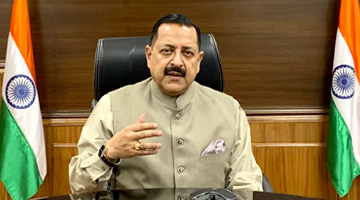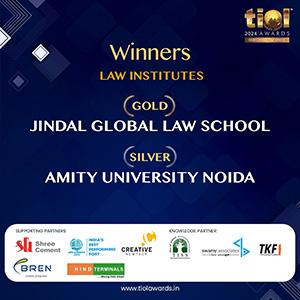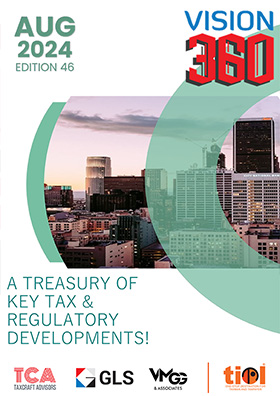Reasonable way of complying with Rule 6 of CCR, 2004
MAY 18, 2015
By Narendra Kumar Singhvi
A tax system based on taxing the gross sales price distorts the tax structure. To correct this, the concept of value added tax provides for the scheme of allowing credits at each level of the consumption chain. To put it simply, credit is given at each stage of the tax paid at the earlier stage.
The essence of the credit scheme is that the tax paid on input goods or services can be utilized for payment of tax on output goods or services. This principle is inherent in the scheme of the CCR, 2004 wherein credit is allowed in respect of duty/ tax paid on capital goods, inputs & input services. To give effect to this principle, provisions have been enacted in Rule 6, in addition to the definition clauses in Rule 2 and the enabling provisions under Rule 3.
Rule 6(1) of the CCR, 2004 provides that no credit shall be allowed on such quantity of input or input services which is used in the manufacture of exempted goods or exempted services. It is important to bear in mind the use of the word 'allow' in Rule 6(1) which places restriction on allowing of credit in respect of such quantity of input or input services which are used in the manufacture of exempted goods or exempted services. Rule 6(2) requires the assessee to maintain separate accounts towards use etc. of input/ input services in or in relation to taxable and exempted output and to take credit only in respect of quantity used in relation to taxable output. Rule 6(3) prescribes three different methods for availment of credit in cases where the input/ input services are used in both taxable and exempted output.
Prior to 2008, Rule 6(3) recognized reversal of proportionate credit by assessee manufacturing specified final exempted products. In other cases, it mandated payment of a specified percentage of the value of exempted final output. After the amendment in 2008, the facility of proportionate reversal of credit has been extended to all assesses and in alternate, the facility of payment of specified percentage of value of exempted output has also been provided.
For example, the total turnover of a manufacturer during a particular period is Rs. 10 crore, out of which Rs. 4 crore pertain to exempted products and Rs. 6 crore pertain to dutiable products. The manufacturer has paid Rs. 10 lakhs on the inputs and input service received by it. If the manufacturer opts for reversal of proportionate credit, he would be required to reverse Rs. 4 lakhs, being proportionate to the ratio of value of exempted turnover to total turnover. However, if the manufacture opts for payment of 8% of the value of exempted turnover, he would be required to pay Rs. 32 lakhs. Though these two are alternate modes of achieving the same purpose, the cost incurred by the manufacturer to follow the route of payment of specified percentage may be more than that incurred in opting the route of reversal of proportionate credit.
It is in this background that litigation has grown manifold regarding the availability of these facilities to assessees in case where common inputs or input services are used in manufacture of both exempted and dutiable products. Needless to say, the contention of the department in most of the cases has been that the payment of specified percentage is mandatory.
In this regard, useful reference can be made to decision of the larger bench of the Hon'ble Tribunal in Nicholas Piramal (I) Limited v. Commissioner of Central Excise, 2008-TIOL-1877-CESTAT-MUM-LB, wherein it was held that the reversal of credit is as good as non-availment of credit itself and in such a case, the payment of specified percentage is not required as the assessee would be considered to have not availed the proportionate credit itself. The larger bench relied on the decision of the Hon'ble Supreme Court in Chandrapur Magnet Wires (P) Limited v. Collector, 2002-TIOL-41-SC-CX, wherein it was held that the reversal of duty amount before removal of exempted goods amounts to non-availment of credit on inputs.
However, on appeal by the department, the Hon'ble Bombay High Court set aside the order of the Larger bench in its decision reported at 2009-TIOL-649-HC-MUM-CX. The High Court held that in cases of credit on common inputs or input services, credit can be availed strictly in compliance of the methods prescribed in Rule 6(3) of the 2004 Rules and the later reversal of credit is of no avail to the manufacturer.
It is to be noted that this decision of the High Court has created practical and undesirable difficulties. In a given case, where common input services are being used by a manufacturer for manufacture of both dutiable and exempted products, it is not possible for the assessee to maintain separate accounts. However, reversal of proportionate credit shall be the most reasonable formula for complying with the restrictions imposed in Rule 6(1) regarding not allowing of credit in respect of such quantity of input services that are used in the manufacture of exempted final products.
Contrary to the above, the Hon'ble Gujarat High Court, in Commissioner of Central Excise v. Maize Products, 2008-TIOL-596-HC-AHM-CX, has taken a view that reversal of credit on common inputs shall be sufficient compliance of provisions of Rule 6 as the payment of specified percentage would be highly disproportionate. Similar observations have been made in Commissioner of Central Excise v. Anil Products Limited, 2010-TIOL-528-HC-AHM-CX.
Reference is made to the decision of the Hon'ble Tribunal in Swiss Parenterals Private Limited v. Commissioner of Central Excise, 2014-TIOL-1078-CESTAT-AHM, wherein it was held that even if separate records are not maintained, reversal of proportionate credit would be sufficient for complying with the requirements of Rule 6 and the manufacturer need not pay the specified percentage.
Reference can be made to Circular No. 232/66/96-CX, dated 25.07.1996, wherein following the decision of the Supreme Court in Chandrapur Magnet (supra), the Board clarified that the reversal of credit in RG 23-A register before the removal of exempted final products on actual basis is sufficient. Relying on this Board Circular, the Hon'ble Bombay High Court, in Commissioner of Central Excise v. Concept Pharmaceuticals Limited, [CESTAT order 2006-TIOL-638-CESTAT-MUM], held that reversal of credit in RG 23-A register before the removal of exempted final products would not result in any contravention of Rule 57CC of erstwhile Central Excise Rules, 1944.
At this juncture, it is equally important to note the distinction between availment and utilization of credit. The Supreme Court in Chandrapur Magnet (supra) held that the reversal of credit prior to clearance of final products is equivalent to non-availment of credit itself. In other words, the taking of whole credit in the books of accounts and the reversal of proportionate credit thereof before the clearance of exempted products will not result in any utilization of such credit and the same will remain a mere book-entry. The restriction placed in Rule 6(1) is with respect of allowing of credit itself. The purpose of credit scheme is to use the credit for discharge of output duty liability. The allowing of credit in this spirit should mean the utilization of credit itself and not mere taking of the credit, i.e. making a book entry in the credit register. This principle has been well recognized by the Hon'ble Tribunal in Commissioner of Central Excise v. Asia Pacific Hotels Limited, 2013-TIOL-1078-CESTAT-MUM.
It is also to be noted that this principle was recognized by the minority decision of the larger bench in Nicholas Piramal (supra), but only for the period subsequent to the amendment of 2008 where the facility of proportionate reversal was extended to all cases. These observations can be noted in Para 23 of the said order.
It is equally important to note that the reversal of such proportionate credit can be made even subsequent to the utilization of credit, but with interest. If in such a case, the manufacturer has utilized the said credit for discharging duty, the reversal of credit, whether by reversal itself or by payment in cash, along with interest would neutralize the situation. This principle has been approved by the Hon'ble Tribunal in its decision in Dr. Writer's Food Products Private Limited v. Commissioner of Central Excise, 2009-TIOL-846-CESTAT-MUM.
In this background, if an assessee reverses proportionate credit before the clearance of goods, i.e. the point in time where such credit can be utilized, it is simply equivalent to non-availment of credit itself. Where such reversal is made after clearance of goods, the same has to be made along with interest . In such a case, to demand a specified percentage of the value of exempted turnover would go against the spirit of the credit scheme itself.
(The author is Senior Associate, Lakshmikumaran & Sridharan, New Delhi.)
|
( DISCLAIMER : The views expressed are strictly of the author and Taxindiaonline.com doesn't necessarily subscribe to the same. Taxindiaonline.com Pvt. Ltd. is not responsible or liable for any loss or damage caused to anyone due to any interpretation, error, omission in the articles being hosted on the sites)
|















